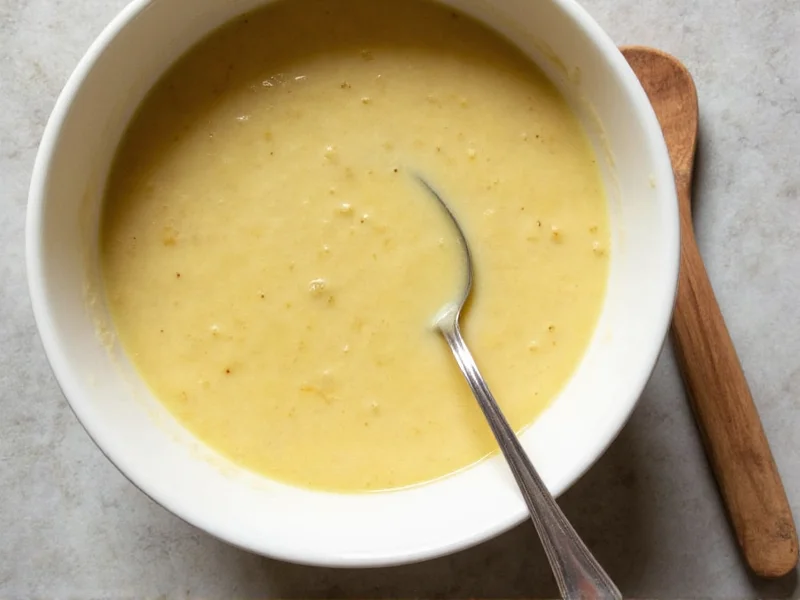The best slow cooker potato soup recipe combines russet potatoes, onions, garlic, chicken broth, and cream for a rich, creamy texture with minimal effort. Cook on low for 6-8 hours or high for 3-4 hours until potatoes are fork-tender. This hands-off method develops deep flavors while maintaining the soup's velvety consistency without constant stirring.
Why Slow Cooker Potato Soup Is a Weeknight Savior
Slow cooker potato soup transforms simple pantry staples into a restaurant-quality meal with almost zero active preparation time. Unlike stovetop versions requiring constant attention, the slow cooker's gentle heat allows potatoes to break down naturally, creating that signature creamy texture without excessive mashing or blending. This method prevents scorching while developing complex flavors through extended, controlled cooking.
Essential Ingredients for Perfect Slow Cooker Potato Soup
Quality ingredients make the difference between bland and brilliant potato soup. Here's what you'll need for an exceptional batch that serves 6:
| Ingredient | Quantity | Why It Matters |
|---|---|---|
| Russet potatoes | 3 pounds, peeled and cubed | High starch content creates natural creaminess |
| Yellow onion | 1 large, diced | Provides essential savory base flavor |
| Garlic cloves | 3, minced | Adds aromatic depth without overpowering |
| Chicken broth | 4 cups low-sodium | Better flavor control than regular sodium versions |
| Heavy cream | 1 cup | Creates luxurious texture (substitute half-and-half for lighter version) |
| Unsalted butter | 3 tablespoons | Enhances mouthfeel and carries flavors |
| All-purpose flour | 3 tablespoons | Thickening agent for perfect consistency |
Step-by-Step Slow Cooker Potato Soup Instructions
Follow these professional techniques for foolproof potato soup every time:
- Prep potatoes properly: Cut uniform 3/4-inch cubes to ensure even cooking. Rinse in cold water to remove excess starch that can make soup gluey.
- Sauté aromatics first: While not required, cooking onions and garlic in butter for 5 minutes before adding to slow cooker dramatically improves flavor depth.
- Create a slurry: Whisk flour with 1/2 cup cold broth until smooth. This prevents lumps when thickening the soup later.
- Layer ingredients: Place potatoes in slow cooker first, then pour broth over them. Add sautéed aromatics on top.
- Cook undisturbed: Set to LOW for 6-8 hours or HIGH for 3-4 hours. Resist stirring during cooking to prevent broken potatoes.
- Thicken properly: 30 minutes before serving, whisk in the slurry and cream. Cook uncovered for final thickening.
- Season last: Add salt and pepper after cooking, as flavors concentrate during slow cooking.
Slow Cooker Settings and Timing Guide
Understanding your appliance's behavior ensures perfect results:
| Setting | Timeframe | Texture Result | Best For |
|---|---|---|---|
| LOW (200°F) | 6-8 hours | Ultra-creamy, potatoes fully broken down | Overnight cooking, maximum flavor development |
| HIGH (300°F) | 3-4 hours | Slightly chunkier, more distinct potato pieces | Same-day preparation, firmer potato texture |
| WARM | Up to 2 hours | Maintains consistency without further cooking | Holding before serving, keeping soup ready for guests |
Avoid These 5 Common Slow Cooker Potato Soup Mistakes
Professional chefs consistently warn about these pitfalls that ruin otherwise good soup:
- Adding dairy too early: Cream or milk added at the beginning will curdle. Always incorporate dairy during the last 30 minutes of cooking.
- Overfilling the slow cooker: Never fill beyond 2/3 capacity to allow proper heat circulation and prevent overflow.
- Stirring during cooking: This breaks down potatoes too much, creating a gluey texture rather than creamy.
- Using waxy potatoes: Red or Yukon Gold potatoes maintain their shape too well, preventing that signature creamy texture.
- Seasoning at the beginning: Salt concentration increases as liquid reduces, leading to oversalted soup. Season at the end.
Customization Options for Dietary Needs
This versatile base recipe adapts beautifully to various preferences:
- Vegetarian version: Substitute vegetable broth and use olive oil instead of butter
- Vegan adaptation: Use coconut cream and vegan butter with vegetable broth
- Gluten-free option: Replace flour with 2 tablespoons cornstarch mixed with cold broth
- Protein boost: Add 1 cup diced ham during last hour of cooking
- Extra vegetable version: Include 1 cup diced carrots and celery with the onions
Serving and Storage Recommendations
Maximize your slow cooker potato soup experience with these professional tips:
For optimal flavor, let the soup rest for 15 minutes after cooking before serving. This allows flavors to meld and texture to stabilize. Garnish with fresh chives, crispy bacon bits, or a drizzle of truffle oil for restaurant-quality presentation. The soup thickens as it cools, so have extra broth on hand to adjust consistency when reheating.
Store in airtight containers for up to 4 days in the refrigerator or freeze for up to 3 months. When freezing, omit dairy and add it fresh when reheating for best texture. Reheat gently on stove over medium-low heat, stirring occasionally to prevent scorching on the bottom.
Why This Recipe Works Better Than Stovetop Versions
Slow cooker potato soup develops superior flavor through controlled, gradual cooking that allows natural starches to release gradually. The consistent low temperature prevents the bottom layer from burning while the top remains properly hydrated. This method creates a more uniform texture without the need for constant stirring or risk of scorching that often plagues stovetop versions. The extended cooking time also allows flavors to meld more completely, creating a more complex taste profile than faster cooking methods.











 浙公网安备
33010002000092号
浙公网安备
33010002000092号 浙B2-20120091-4
浙B2-20120091-4